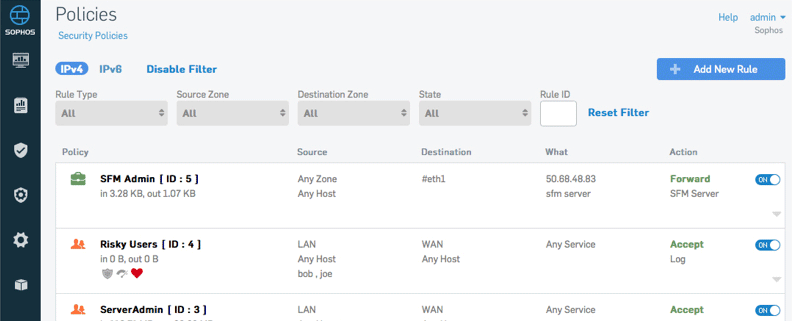 A commitment to simplicity has always been a key part of the Sophos DNA. But perhaps more importantly, Sophos has a rare willingness to embrace change, and take bold steps to do things differently in the interest of providing both better protection and a better user experience.
A commitment to simplicity has always been a key part of the Sophos DNA. But perhaps more importantly, Sophos has a rare willingness to embrace change, and take bold steps to do things differently in the interest of providing both better protection and a better user experience.
When we launched the Sophos XG Firewall, with an all new user interface, we had a rare and exciting opportunity for a fresh start. We not only embraced that opportunity, we made the most of it.
The UX design team invested significant effort in not only making XG Firewall look great, but also addressed some of the top problems with managing firewalls today.
As you well know, modern next-generation firewall technology has gotten incredibly complicated, with several disparate solutions like IPS, web proxies, app control, and antivirus loosely tied together to tackle different threat vectors and compliance requirements. The management burden for the average network admin has reached unsustainable levels, and the amount of information and data these systems produce is simply indigestible.
Surfacing Important Information
It’s critically important for a modern firewall to parse through the mountain of information it collects, correlate data where possible, and surface only the most important information requiring action – ideally, before it’s too late.
That’s exactly what we’ve done with the new Control Center, and many of the underlying technologies that surface information, status and alerts there. Security Heartbeat,™ Advanced Threat Protection, and User Threat Quotient are all innovations in their own right, with the most profound aspect of all three being the traffic-light simplicity of the presentation that completely belies their complex, integrated inner-workings.

Efficient Navigation
Navigating a modern firewall has gotten equally complex, many employing mesmerizing levels of drill-down or hierarchical setup screens or tabs, that make it very difficult to understand how the jig-saw puzzle pieces fit together. For example, it can be a maddening exercise to set up a policy that depends on multiple different objects that all need to be predefined – it can have you running in circles.
Then there’s the paradox of how best to implement navigation to minimize screen real-estate consumption while at the same time maximizing discovery and efficiency.
With the new XG Firewall, we not only made navigation less obtrusive, offering more space for the stuff on the screen that matters, but also enabled easier discovery and made the menus quicker to navigate. Logically structured menus that remember your last selection, offer screen shots and helpful tips of what lies next, and ensure you are never more than three clicks from where you need to be, may seem like simple improvements, but can be enormously welcome during your day-to-day firewall management.

Unified Policy Model
We’ve talked about our unified policy model before, so I won’t do another deep dive here. But I will say that bringing all the polices for users, networking, and business applications together in one place – with enforcement for web, apps, IPS, and traffic shaping – represents a giant leap forward in modern firewall policy management and ease of use.
If you haven’t already seen it (and even if you have, you might find something new), take a short five-minute video tour of the XG Firewall user interface in the video below.
XG Firewall Control Center and Navigation from Sophos on Vimeo.
Ultimately, as you can imagine, we’re just getting started. With Sophos XG Firewall, we’ve laid a solid foundation for the future that allows us to constantly innovate the user experience across many areas of the firewall.
Read these other blog posts about the many innovations in Sophos XG Firewall:
- Sophos XG Firewall: A network security ecosystem with many innovations
- Sophos XG Firewall – Simpler, faster, and more-in-one
- Sophos XG Firewall innovations – Policy management
- Sophos Firewall Manager and iView – Centralized management and reporting for all your XG Firewalls
- Sophos XG Firewall innovations – FastPath packet optimization
